In Search of the Summer Truffle in Tuscany, Umbria, and Marche
By Lorenzo VillaThis is part two of Lorenzo Villa’s Italian summer on a Vespa. Read Part 1: Riviera Romagnola and Piadina here.
Traveling 1000 km on a Vespa can lead to exciting surprises. You are quite free to change the itinerary and decide on-the-spot to continue on to an unplanned destination. This is what happened to us in San Miniato, Tuscany. After leaving behind the Riviera Romagnola and its piadine, and after grinding out more than 200 km (it took us about four hours at a cruising speed of 60 km/h), we arrived exhausted in this small medieval village situated on a hill in the Arno plain. It is an area rich in poplars, beeches and oaks, which means only one thing: truffles.
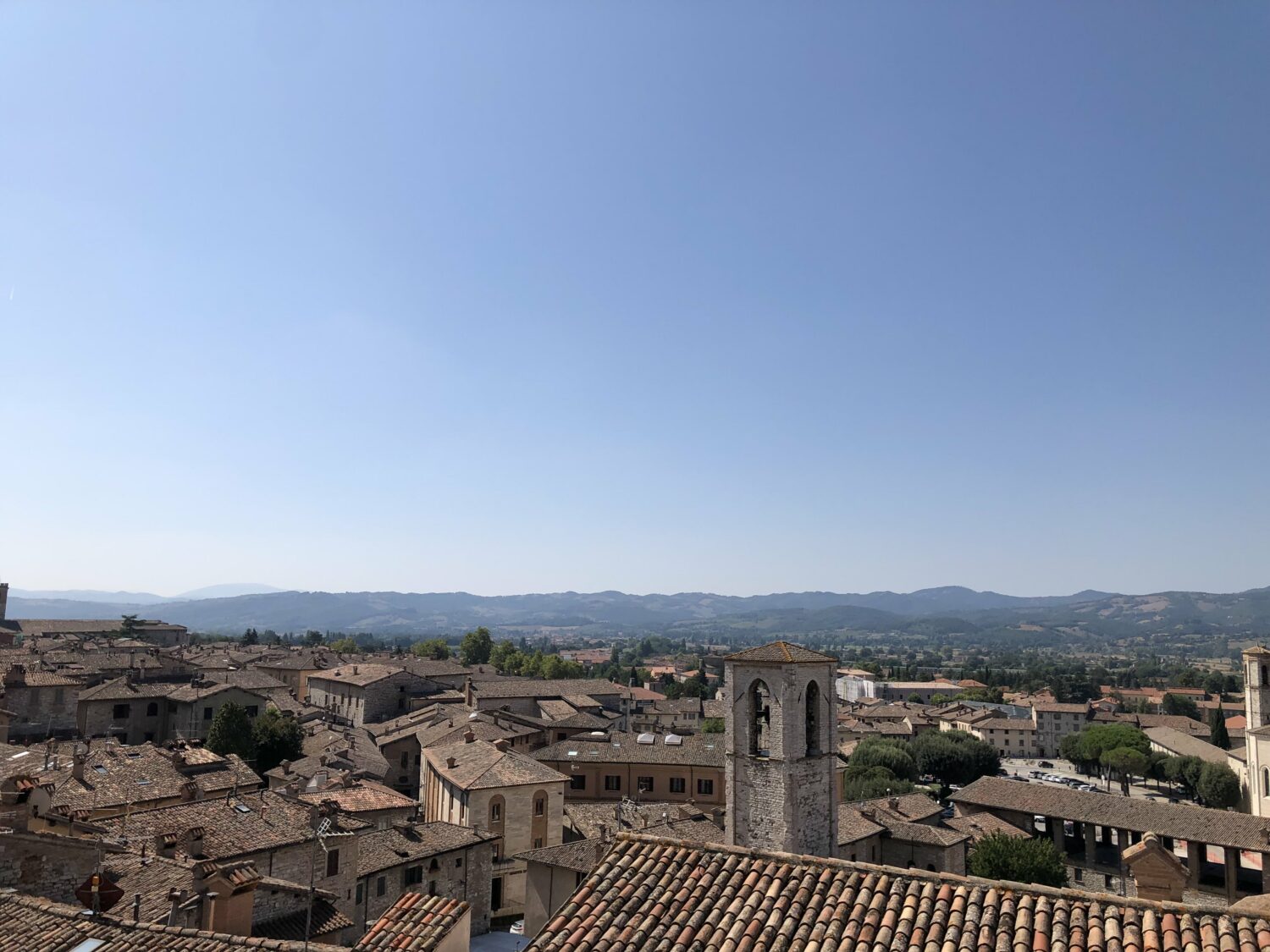
White truffle, fine black truffle and scrozone
In Italy, besides the infamous Alba and its white truffle – last year 1.5 kg was sold for a record price of 184,000€ – there is a central macro-area that is considered the home of the truffle. From the Apennines all the way to Abruzzo, cavatori follow the trail to secure the most prized pieces such as tuber melanosporum (known as the ‘’fine black truffle‘’) or in summer the tuber aestivum (also known as the summer truffle or scorzone for its warty rind).
Before we recall the venues where we sampled the best of this prized ingredient, I have to say one thing: the truffle itself has no particular flavour – some might kill me for saying that. But, boy, the smell! It’s the smell that makes all the difference. A sulphurous bomb explodes and envelops all the senses.
And so, inebriated by this smell, we set off on a quête of typical dishes and unusual combinations with truffles in this strip of land that was once part of the Church State.
Osteria l’Upupa, San Miniato
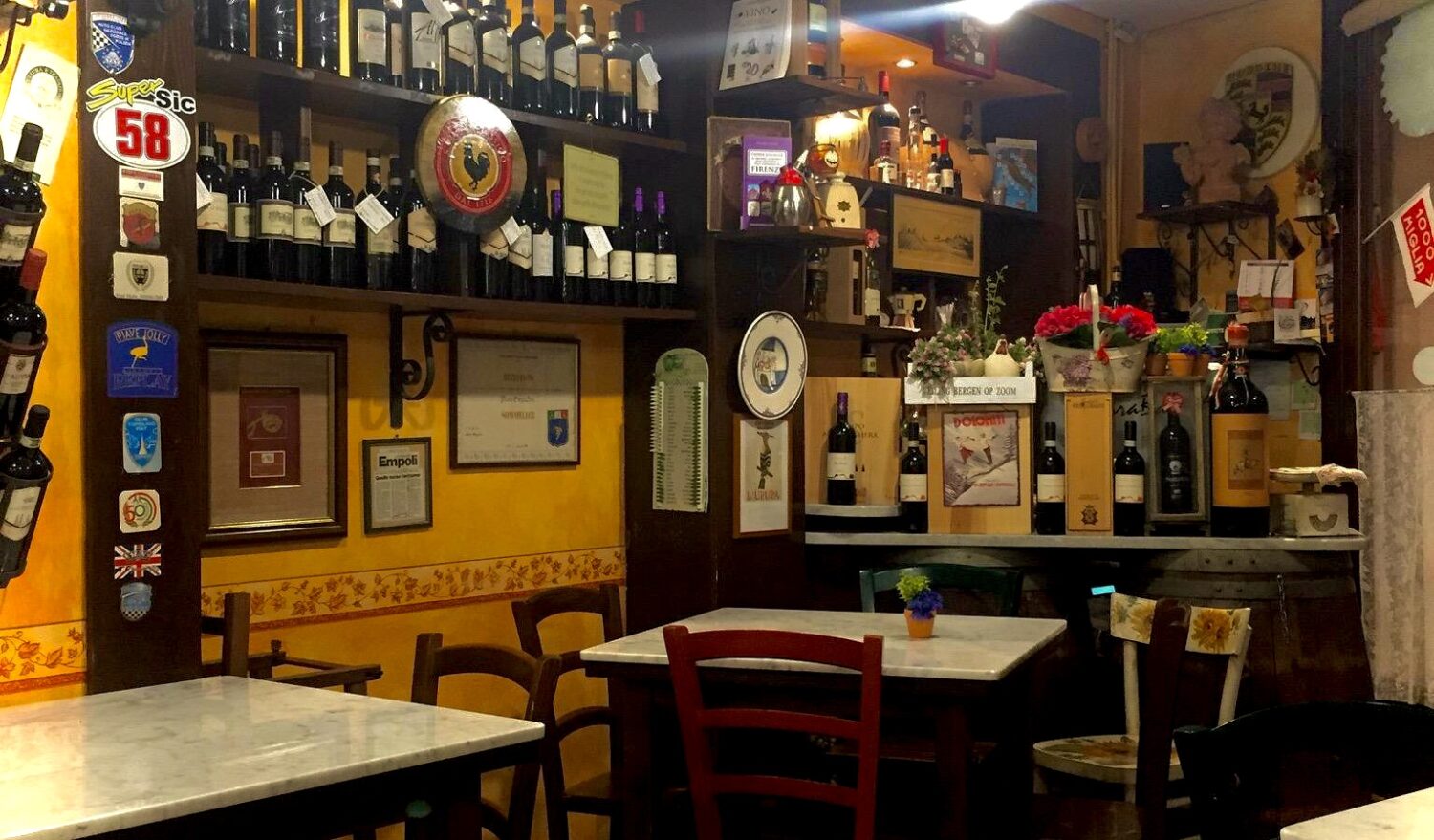
Simplicity often pays off if you have a quality raw material, and at the Osteria l’Upupa the truffle is of the highest order. With its trusted ‘pusher’ who guarantees its freshness all year round, this small osteria offers typical local dishes – the peposo alla fornacina (beef stew baked with wine and pepper) is very delicate – along with a vertical study of truffle. I had no doubts about what to taste: tagliolini with fresh egg and truffle. A perfect combination that managed to enhance the scent and flavour of the ‘scorzone’ that day. The scent was intense and my advice is to accompany the meal with Chianti; and you will not regret any seafood and vermentino.
Via Augusto Conti, 15, 56028 San Miniato, Pisa
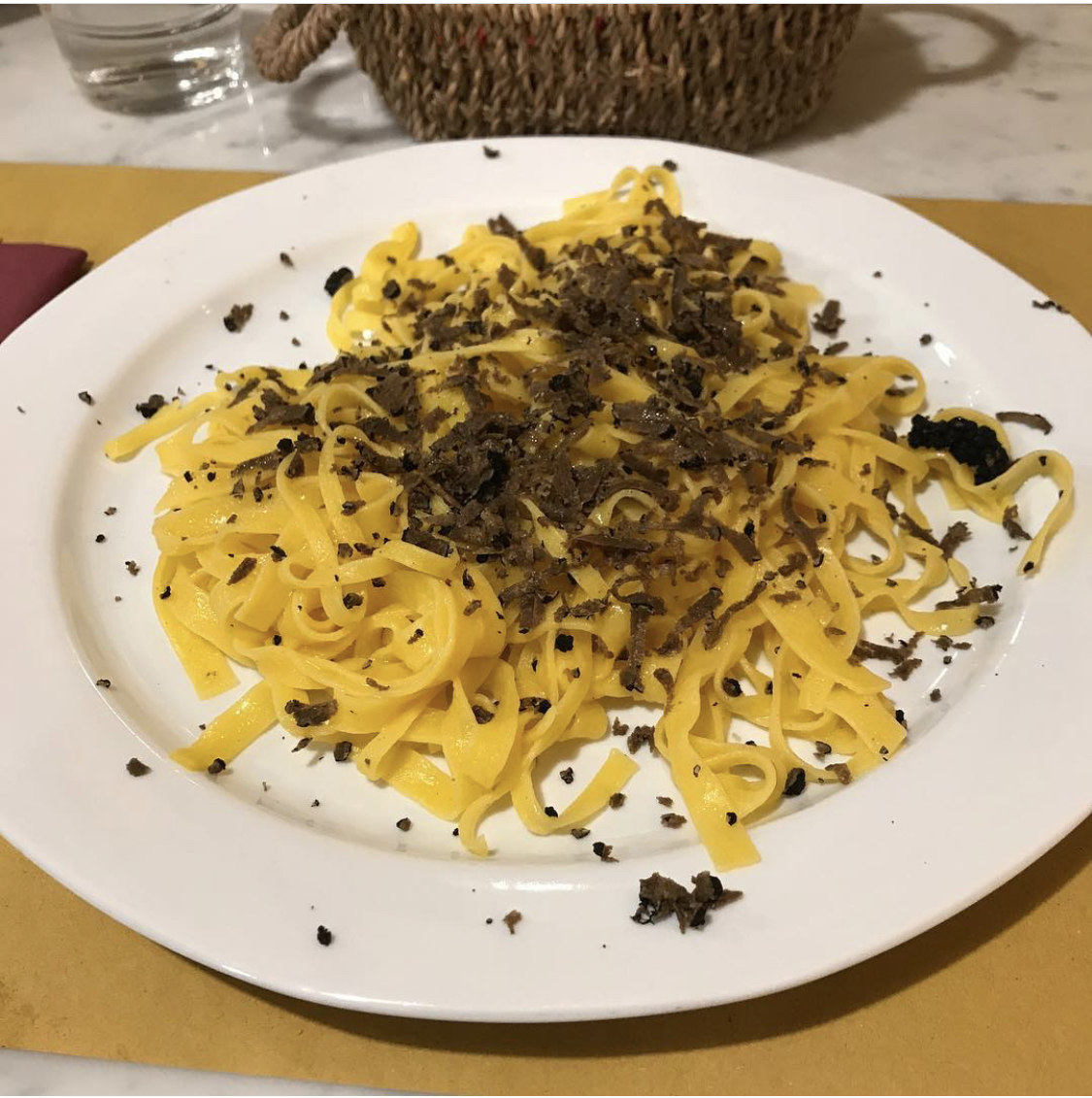
Nicchi, Anghiari
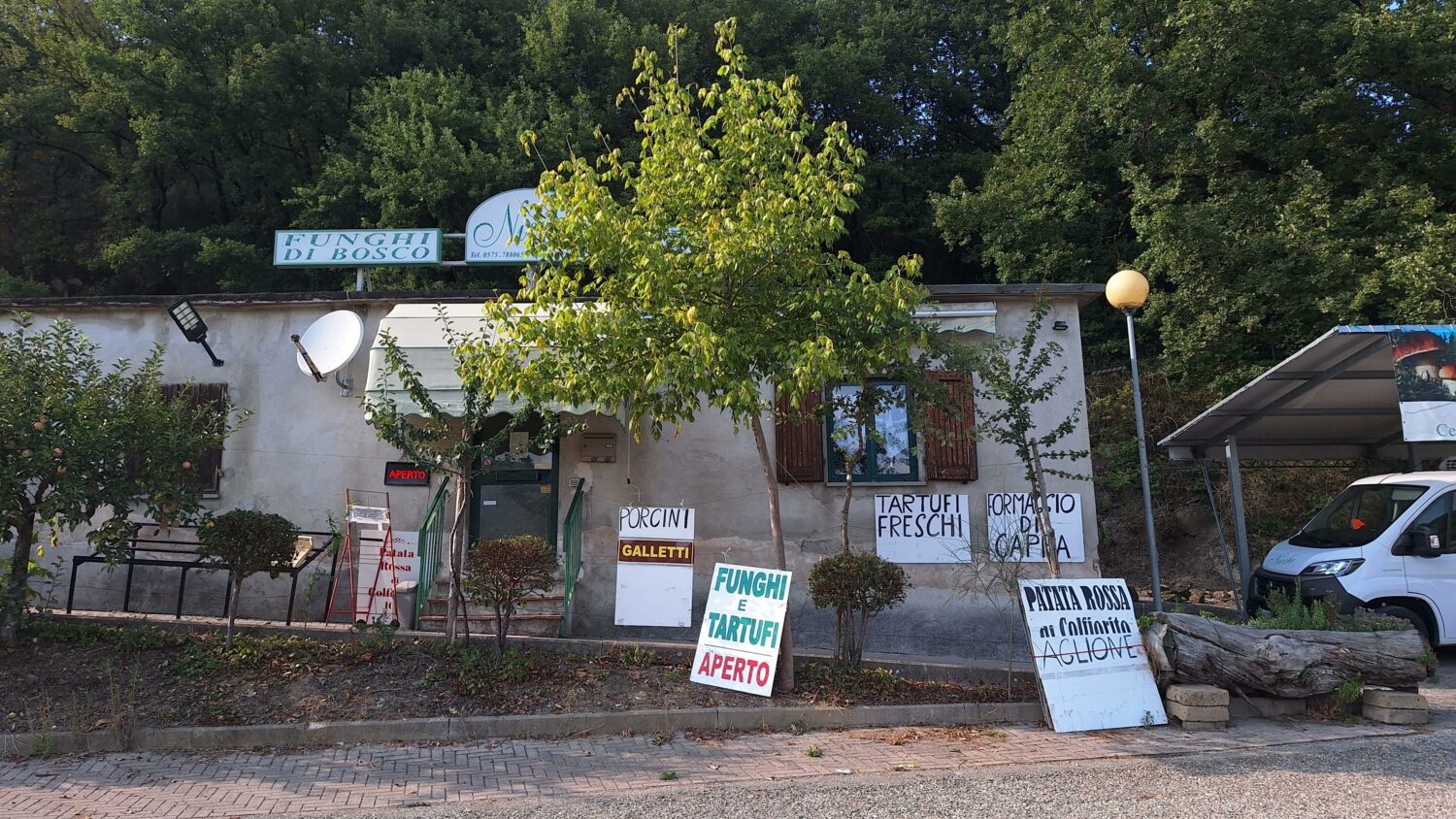
The eastern part of Tuscany, between the provinces of Arezzo and Umbria, boasts some of the most beautiful countryside in the world. The gentle slopes of the Val di Chianti give way to the countryside of Arezzo, already more wooded and green and marked for a few kilometres by the river Tevere. We stopped in the middle of one of these hills, attracted by a large, unmistakable sign on a small farmhouse: ‘Nicchi: Funghi di bosco e Tartufi Freschi’ (Forest Mushrooms and Fresh Truffles).
More like an outpost for mushroom hunters and ‘cavatori’, Nicchi is a family-run farm. Fresh truffles are stored in wooden boxes kept near the counter along with balances for weighing. Next to it, a board with seasonal prices – much of the price depends on the day and the amount of truffle you are able to harvest, says Mrs Nicchi. In the adjacent room there is a wall of truffle products for sale, all made in their workshop: mayonnaise, truffled vegetables, sauces for pasta dishes, but their black truffle honey is the jewel that everyone must try.
Località Bagnaia 50/a, Anghiari, Arezzo
Locanda del Duca, Gubbio
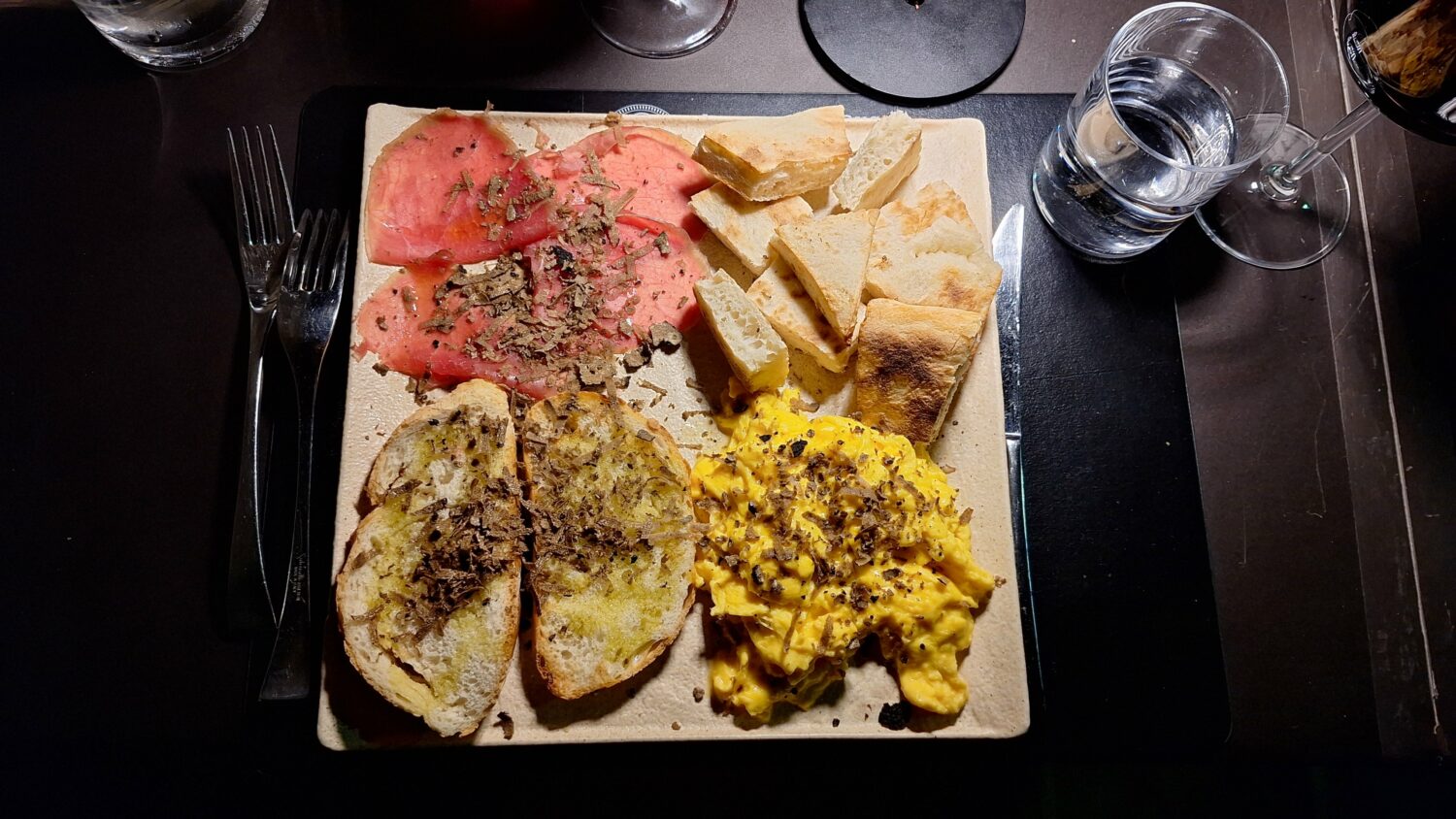
We crossed the border with some difficulty and found ourselves in northern Umbria. The slopes here are more pronounced and the Vespa, laden with luggage and weight, needed several stops to rest. We wanted to make it all the way to Urbino in a day, but as we reached the crest of a hill, we saw a small town in the distance that caught our attention. Gubbio is a small medieval town that has something surreal about it. A Roman amphitheatre from the first century AD introduces what is now the historic centre, a stratification of medieval and Renaissance history surrounded by ancient Roman walls. In one of the gates, at the entrance to Via Piccardi, is the Locanda del Duca, whose menu is all about the specialities of northern Umbria, with a focus on truffles. Start your journey with an appetiser of simple scrambled eggs literally covered in truffles; for your first course, umbricelli – also called pici, thick fresh spaghetti – with summer truffles; and finally, dessert: a creme caramel, with truffles of course.
Via A. Piccardi, 1, 06024, Gubbio, Perugia
Da Baffone, Gubbio
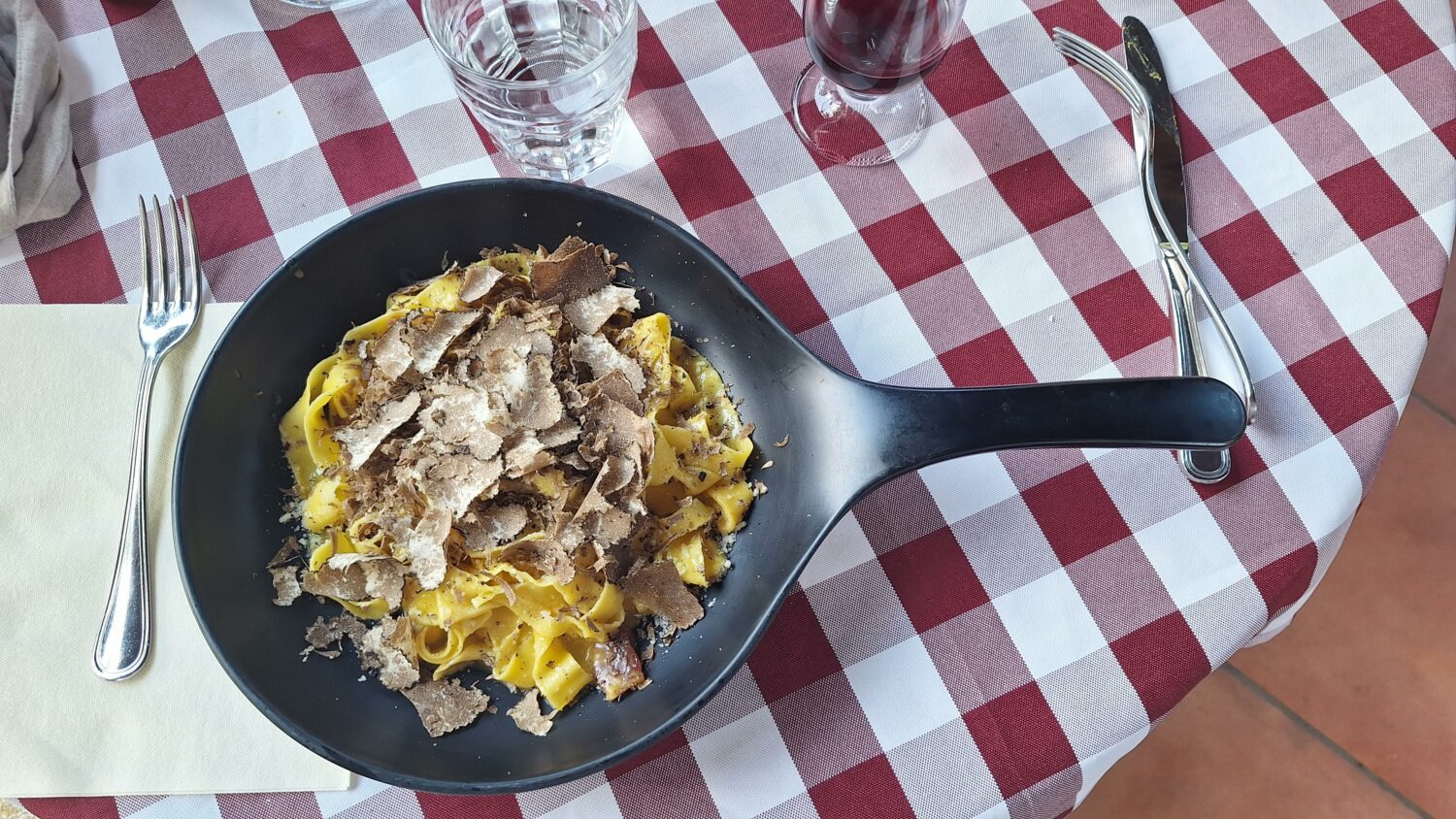
You have to get up early in the morning and arm yourself with a spirit of adventure to go to the truffle sanctuary known as Da Baffone. Ubaldo Casagrande, before his death in 2001, was a fortune-teller, exorcist, seer – as well as a farmer – and in the 1990s, he helped not only people’s souls but also their palates, opening Da Baffone (with his long, thick moustache, he was nicknamed Baffone, which means ‘man with a big moustache’), an agritourism specializing in truffles. Baffone himself used to go truffle hunting and he would serve truffles at a hidden inn in the woods bordering the Marche region. You have to, as I said, arm yourself with patience and adventure, because the road to get there is narrow and winding. But once you arrive you understand why it is called the truffle sanctuary – aside from the stories of Baffone’s supernatural powers. I got carried away by the excitement of a truffle carbonara (it is a normal carbonara covered in scorzone, delicious). But the dish that really made me believe in the supernatural was the truffle cheese fondue. Served with crescia (a flatbread similar to piadine, but much thicker) it is the dish that made us say that our quête could be considered finished having reached the Holy Grail.
Località Santa Maria di Gubbio 31, 06024, Gubbio, Perugia
The Vespa gave little sign of flinching, but our backs did. So we decide to stop in the north of the Marche, at the Borgo Storico Cisterna Agriturismo, in Macerata Feltria. Literally an entire hamlet (some of the flooring dates back to Roman times) at the disposal of those staying there, all carefully maintained by Stefania and Mario. The late August sunset welcomed us along with the tasting menu, entirely cooked by Stefania. We knew we were behind schedule for our return home, but reasoned that this impromptu stop was the cherry on the top of this 1000km journey on a Vespa.
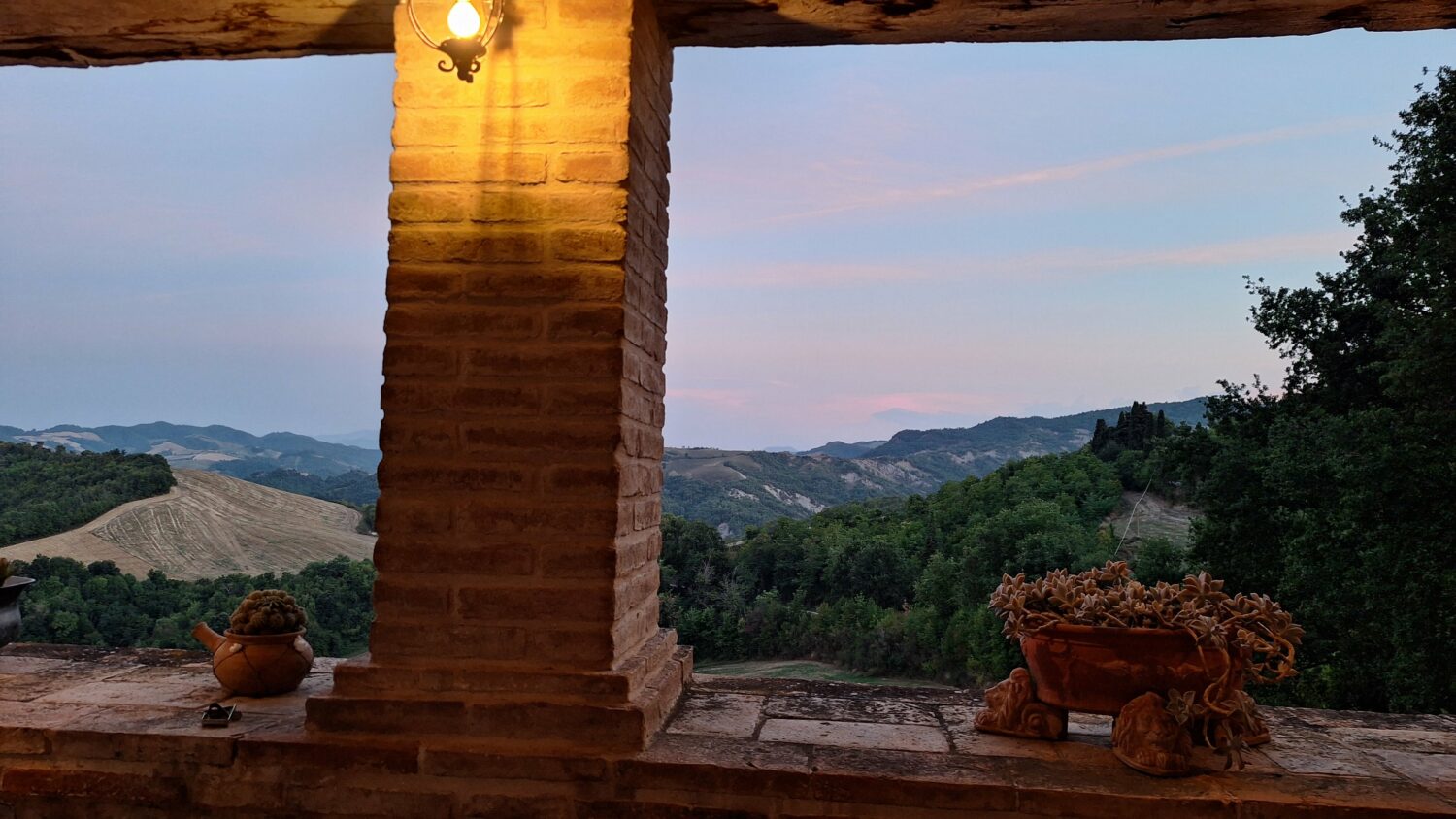
Lorenzo Villa is a writer and editor based in Milan. He writes about lifestyle for Harper’s Bazaar Italia and collaborates with the literary magazine Galápagos. All photos, including the header image: Nicchi shop in Anghiari, by Lorenzo Villa.